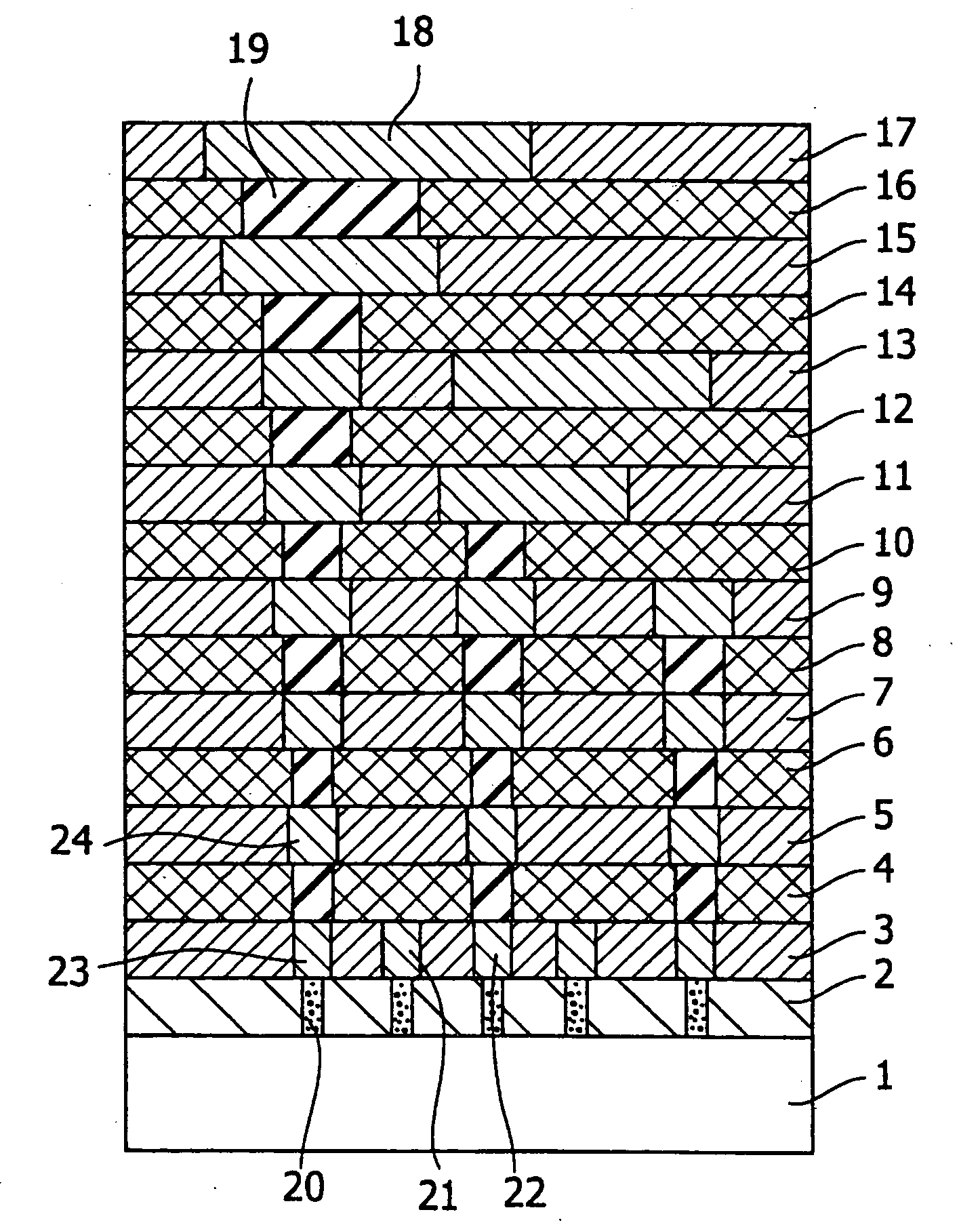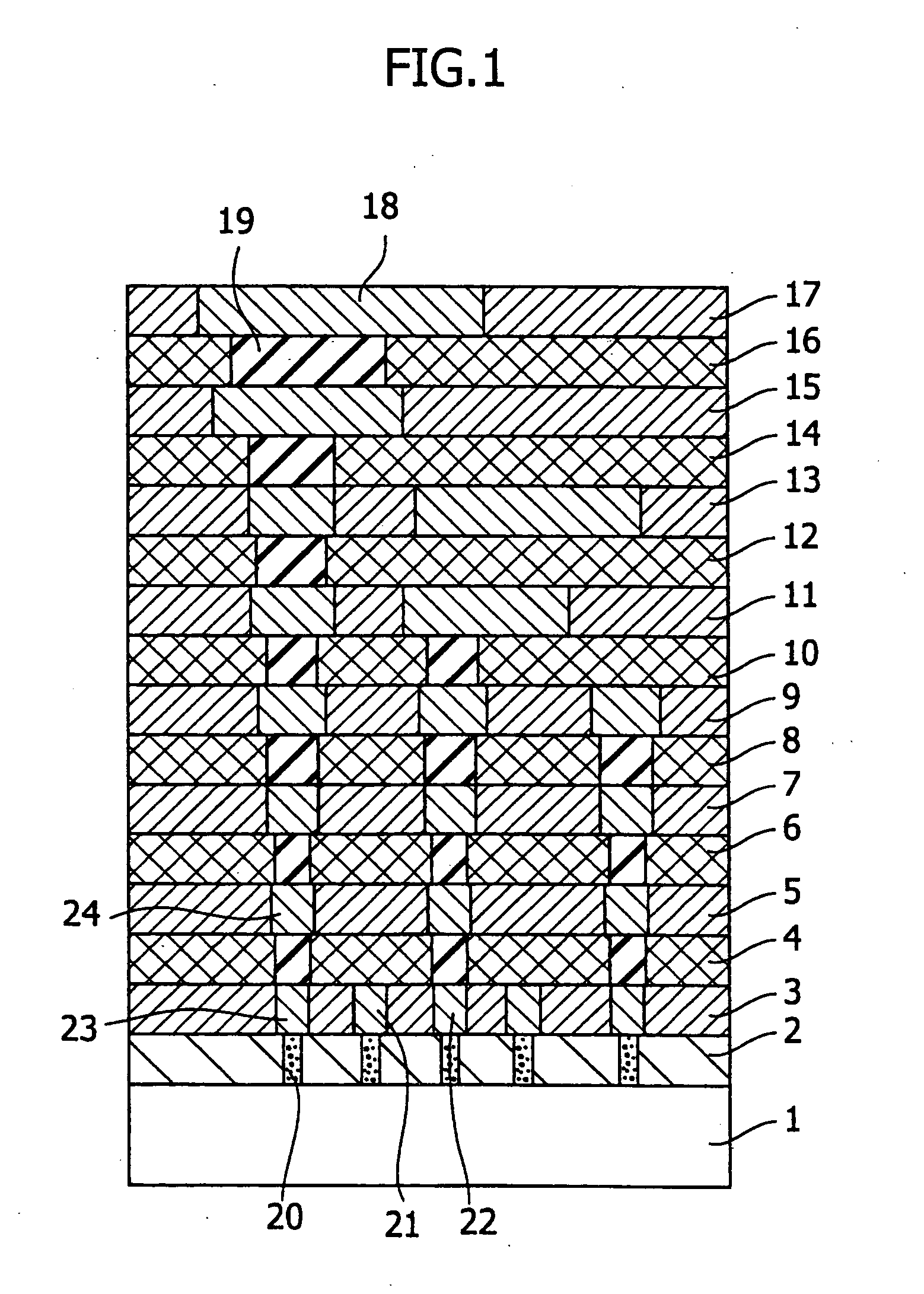Zeolite sol and method for preparing the same, composition for forming porous film, porous film and method for forming the same, interlevel insulator film, and semiconductor device
a technology of zeolite sol and zeolite, which is applied in the field of zeolite sol and method for preparing the same, which can solve the problems of increasing the interconnection delay time, hindering the enhancement of the performance of the semiconductor circuit, and increasing the cost of the siloxane polymer synthesis precursor solution, and achieves low dielectric constant, high film consistency, and mechanical strength sufficient
- Summary
- Abstract
- Description
- Claims
- Application Information
AI Technical Summary
Benefits of technology
Problems solved by technology
Method used
Image
Examples
example 2
[0107] Another zeolite sol was prepared in the same manner as in Example 1 except that 210 g of aqueous solution of 1 mol / L tetrabutylammonium hydroxide was used instead of 163 g of aqueous solution of 1 mol / L tetrapropylammonium hydroxide.
example 3
[0108] Another zeolite sol was prepared in the same manner as in Example 1 except that 94 g of tetraethoxysilane was used instead of 69 g of tetramethoxysilane.
example 4
[0109] A mixture of 69 g of tetramethoxysilane and 66 g of methanol was dropped over 1 hour at 40° C. into a mixture of 65 g of 40 wt % aqueous methylamine solution of, 30 g of ultra pure water, 430 g of methanol and 163 g of aqueous solution of 1 mol / L tetrapropylammonium hydroxide. The resultant solution was condensed at 40 to 45° C., and the reaction mixture was stirred for 24 hours at 75° C. so as to obtain a zeolite sol.
[0110] In the following Coating Examples 1 to 4, the zeolite sols obtained in Examples 1 to 4 were added to a base component to prepare a composition for forming a porous film. Then, a porous film was formed and its physical properties were measured by the following methods.
[0111] Relative permittivity was measured by a CV method with an automatic mercury probe, by using a 495 CV Measurement System (from SSM Japan).
2. Coefficient of Elasticity
[0112] Coefficient elasticity was measured by using a nano indicator (from Nano Instrument...
PUM
| Property | Measurement | Unit |
|---|---|---|
| particle diameter | aaaaa | aaaaa |
| temperature | aaaaa | aaaaa |
| relative permittivity | aaaaa | aaaaa |
Abstract
Description
Claims
Application Information
 Login to View More
Login to View More - R&D
- Intellectual Property
- Life Sciences
- Materials
- Tech Scout
- Unparalleled Data Quality
- Higher Quality Content
- 60% Fewer Hallucinations
Browse by: Latest US Patents, China's latest patents, Technical Efficacy Thesaurus, Application Domain, Technology Topic, Popular Technical Reports.
© 2025 PatSnap. All rights reserved.Legal|Privacy policy|Modern Slavery Act Transparency Statement|Sitemap|About US| Contact US: help@patsnap.com


